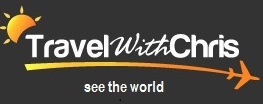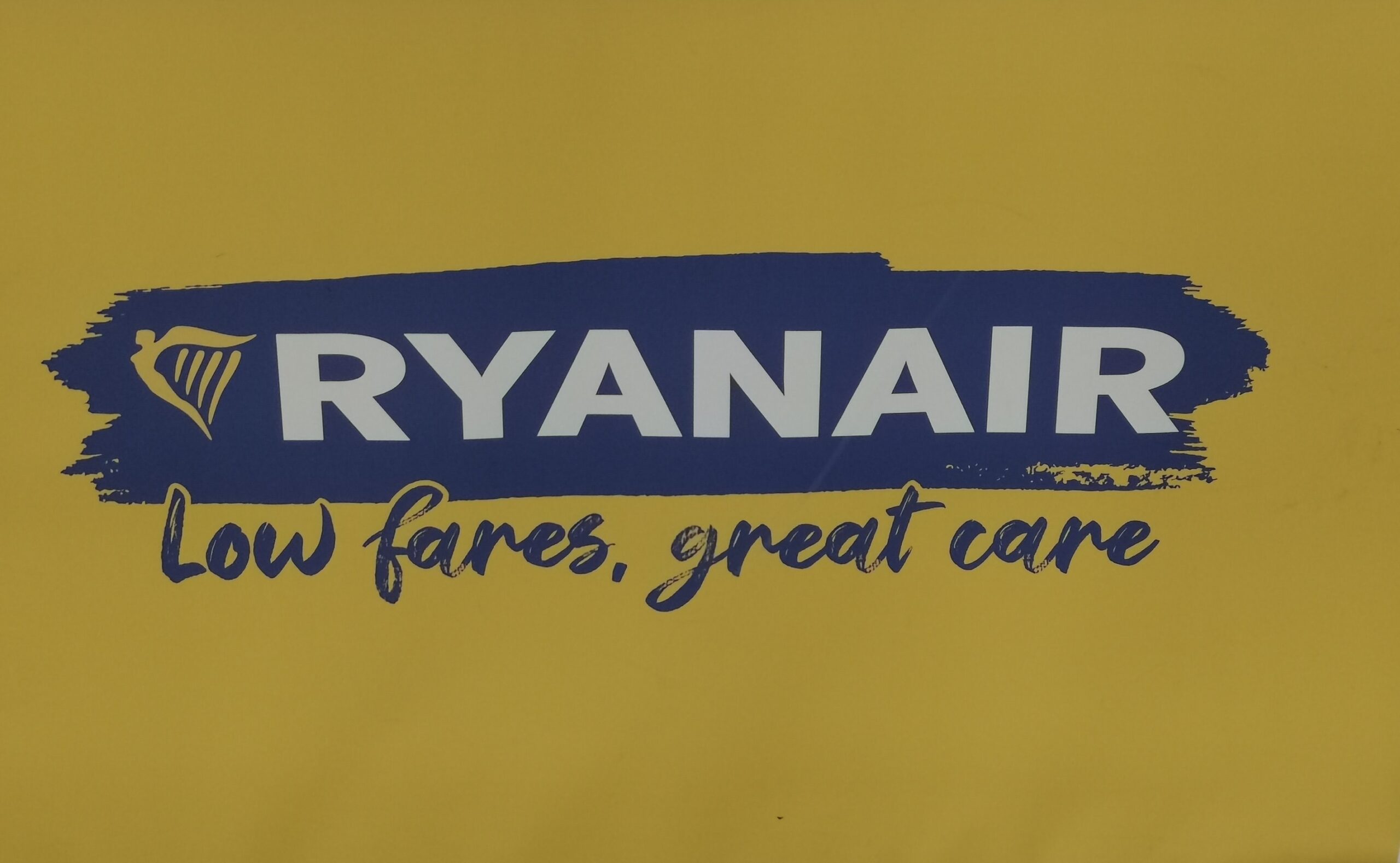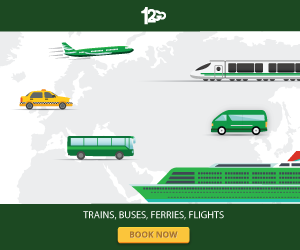Europe’s low-cost airlines have transformed air travel, making it more accessible and economical for a wider variety of passengers. These airlines place a high value on economy, frequently providing basic facilities at competitive prices to appeal to travelers on a tight budget. In Europe, some well-known low-cost carriers are Norwegian Air Shuttle, Ryanair, EasyJet, and Wizz Air.
With its main office located in Ireland, Ryanair is one of the biggest and most well-known low-cost airlines worldwide. Ryanair is a European airline that operates a wide network and specializes in short-haul travel. For an additional fee, passengers can add extra services to their trip.
Another significant contender is easyJet, a UK-based airline that flies to several locations throughout Europe. EasyJet, which recognized for its orange livery, has an emphasis on efficiency and simplicity while allowing passengers to customize their travel experience to suit their needs.
An affordable option for travelers in Eastern and Western Europe offered by the Hungarian airline Wizz Air, which specializes in linking these areas.
With its main office located in Norway, Norwegian Air Shuttle became well-known for its low-cost long-haul airline that provided reasonably priced transatlantic flights. Even though they have financial difficulties, these airlines work together to democratize air travel so that more people can see Europe without going broke.
In this article, we will give you some of the cheapest European low-cost airlines in Europe when you are looking to travel on a budget.
Ryanair
One of the biggest and most well-known low-cost airlines in the world is Ryanair, which has its headquarters in Dublin, Ireland. Since its founding in 1984, the airline has changed the face of aviation in Europe by lowering costs and increasing accessibility for millions of travelers.
Ryanair is a well-known airline with a wide network of short-haul flights throughout Europe and North Africa. Best recognized for its vivid yellow branding and its characteristic trumpet fanfare upon landing. The airline’s strategy for maintaining competitive ticket rates centered on cost effectiveness, making use of minor airports, providing point-to-point services, and going without frills.
Essential services provided to passengers aboard Ryanair flights; additional luxuries are available for an additional fee. The airline frequently charges for extras like seat preference, in-flight meals, and checked baggage, letting customers tailor their experience to their tastes and price range.
Ryanair has unquestionably had a significant impact on the airline business, even in the face of sporadic disputes and complaints about its policy and customer care. It has greatly contributed to the spread of the idea of low-cost travel, making it possible for a great number of people to see Europe on a budget. The airline has become a major force in the ever-changing European aviation market thanks to its dedication to offering affordable prices and a wide network of routes.
EasyJet
EasyJet is a low-cost airline based in Britain that has gained significant traction in the European aviation market. The airline is well-known for its orange-liveried aircraft and dedication to provide reasonably priced air travel. Since its founding in 1995, EasyJet has connected key cities and well-liked vacation locations around Europe by growing its network.
The airline offers travelers a clear travel experience at low pricing with its no-frills approach, which emphasizes on efficiency and simplicity. EasyJet has established a reputation as the airline of choice for travelers looking for efficient and reasonably priced travel, with bases all over Europe and a hub at London Luton Airport.
EasyJet has a point-to-point business model, which connects passengers directly between cities without the need of a conventional hub-and-spoke system. The airline’s fleet primarily made up of Airbus aircraft. Travelers can personalize their experience by selecting extra services like assigned seating, more baggage allowance, or meals served during flight.
EasyJet has successfully balanced affordability and customer satisfaction while upholding the low-cost carrier model. This has allowed the company to build a sizable customer base and make a significant contribution to the democratization of air travel throughout Europe.
Wizz Air
With a vast network of flights linking Eastern and Western European locations, the Hungarian low-cost airline Wizz Air has become a major force in Europe’s low-cost aviation market. Since its founding in 2003, Wizz Air has gained recognition for both its eye-catching pink and purple livery and its dedication to providing reasonably priced travel options.
Wizz Air is a point-to-point airline based in Budapest that specializes on direct flights between minor airports in order to cut costs and provide affordable pricing. The airline serves both well-known tourist locations and less-frequented places along its extensive route network throughout Europe.
The majority of Wizz Air’s current fleet consists of Airbus models, and the airline is well-known for its timely and effective operations. Travelers looking for low-cost solutions can find affordable alternatives from the airline, which frequently targets underserved communities.
Wizz Air passengers have the option to customize their travel experience by selecting from a variety of extra services, such as priority boarding, more legroom, and in-flight beverages.
Wizz Air is a rapidly expanding low-cost airline in Europe that has greatly enhanced the accessibility of air travel for a wider range of people, thereby contributing to the dynamic aviation scene of the region.
Norwegian Air Shuttle
Norwegian Air Shuttle, also referred to as Norwegian, is a low-cost airline based in Norway that has had a noteworthy influence on the aviation sector. Since its founding in 1993, the airline has grown internationally and now provides both short- and long-haul flights.
Norwegian well known throughout the world for its creative approach to low-cost long-haul travel, offering reasonably priced transatlantic flight options. Due to its wide network that links key cities, the airline is well-liked by those looking for direct, reasonably priced flights.
Many airports in Europe, North America, and Asia are home to Norwegian’s recognizable red-nosed aircraft. The airline’s reputation for efficiency and environmental sensitivity largely attributed to its fleet, which predominantly made up of contemporary Boeing and Airbus aircraft.
Even though Norwegian experienced financial difficulties, which were made worse by the COVID-19 epidemic, its impact in upending the expectations of intercontinental travel with more affordable tickets and increased connection has changed the landscape of long-haul travel.
Due to its dedication to offering affordable options together with a variety of facilities, such as Wi-Fi on board and a loyalty programme, Norwegian has become a significant participant in the highly competitive low-cost airline industry, impacting the global travel industry’s evolution.
Transavia
Transavia is a low-cost airline based in the Netherlands that has gained popularity among travelers on a tight budget who are looking for inexpensive flights to and from Europe’s locations for leisure. Established in 1965, Transavia functions as an affiliate of the Air France-KLM Group, offering a varied selection of flights to both urban and vacation locations.
The airline has a network of routes that includes key European cities and well-liked vacation destinations throughout the Mediterranean, the Canary Islands, and Northern Africa. Its fleet primarily made up of Boeing aircraft. Passengers can personalize their experience with Transavia’s uncomplicated flight travel by selecting extras like on-board meals or more legroom.
With its main hubs at the airports of Rotterdam, The Hague, and Eindhoven, Transavia serves a wide range of customers and provides practical choices for both business and pleasure travel. The airline’s standing as a major participant in the European low-cost airline market is a result of its dedication to offering dependable and reasonably priced flights. The focus Transavia places on efficiency and simplicity is in line with the changing tastes of passengers looking for affordable and adaptable air travel options.
Jet2
Travelers looking for dependable and reasonably priced air travel services are increasingly choosing the British low-cost airline Jet2. Since its founding in 2002, the airline has expanded dramatically, providing a wide variety of flights to different locations, with a special emphasis on leisure routes to cities and vacation destinations in Europe.
Jet2 is based at Leeds Bradford International Airport and is a subsidiary of Dart Group PLC. With new bases at the airports of Manchester, Birmingham, Edinburgh, Glasgow, Newcastle, and London Stansted, the airline has increased its reach.
Jet2 has amassed a devoted following of customers thanks to its approachable and customer-focused style. The airline prioritizes offering all-inclusive vacation packages that comprise travel, lodging, and transfer services in order to attract customers looking for hassle-free travel experiences.
The majority of the aircraft in Jet2’s fleet are Boeing models, and the airline is well-known for its reliability and attentive customer care. Jet2 remains a significant participant in the competitive low-cost airline industry, offering a variety of alternative services to passengers and a dedication to cost-effectiveness. The airline connects passengers to major locations throughout Europe.
Pegasus Airlines
Since its founding in 1990, the Turkish low-cost carrier Pegasus Airlines has become a prominent force in the aviation sector. With its main office located in Istanbul, the airline has established itself as a top option for travelers on a tight budget looking for reasonably priced flights both within Turkey and to other countries.
Pegasus Airlines is a point-to-point airline that serves a variety of European, Middle Eastern, and Central Asian destinations in addition to linking popular Turkish cities and vacation locations. The airline’s fleet primarily made up of contemporary Airbus planes, which supports its dedication to efficiency and safety.
Pegasus, which is well-known for its simple and affordable air travel, lets customers personalize their journey by offering extra baggage, seat preference, and in-flight refreshments. The airline’s focus to efficiency and simplicity reflected in the booking procedure, which improved by its user-friendly web platform.
Pegasus has made a major contribution to the expansion of Turkey’s tourism sector by increasing air travel accessibility for a wider audience. Maintaining a competitive edge in the low-cost carrier market in the region, Pegasus Airlines prioritizes pricing, dependability, and a wide network.
Vueling
Spanish low-cost airline Vueling has made a name for itself in Europe by offering convenient and reasonably priced flight options. Since its 2004 founding, Vueling has grown to be a major force in the aviation sector, linking a variety of locations in Europe, the Middle East, and Africa.
With its main office located in Barcelona, Vueling prioritizes efficiency and safety while flying a contemporary fleet of Airbus planes. The airline has deliberately positioned itself to serve key European cities and popular vacation locations, with its main hubs being Barcelona-El Prat Airport and Leonardo da Vinci-Fiumicino Airport in Rome.
In addition to its dedication to providing affordable travel, Vueling places a high priority on customer pleasure by giving customers the freedom to select extra baggage, in-flight amenities, and seat preferences. The airline offers a user-friendly online booking platform that caters to a wide range of traveler preferences, improving the booking experience.
Vueling’s colorful livery and dedication to on-time service have made it a popular alternative for budget-conscious and dependable air travel for both business and leisure travelers, solidifying its position as a major participant in the cutthroat European low-cost airline market.
Blue Air
By offering reasonably priced air travel options, Romanian low-cost carrier Blue Air has made a name for itself in the European aviation sector. Blue Air was established in 2004 and has progressively expanded, with its main hub located at the Henri Coandă International Airport in Bucharest, Romania.
The airline serves both business and leisure passengers and focuses on connecting a wide variety of European locations. With a focus on efficiency and safety in its operations, Blue Air primarily operates Boeing and Airbus aircraft in its fleet.
In addition to its dedication to providing affordable travel, Blue Air boasts an easy-to-use online booking interface that lets customer’s book flights, maintain their reservations, and personalize their trip with extras like extra baggage and seat preference.
Blue Air prioritizes reliability and timeliness while keeping things simple to keep prices affordable. The airline’s network reaches both big cities and smaller airports throughout Europe, which helps explain why so many people choose it when looking for affordable and effective domestic travel.
With its characteristic blue and yellow livery, Blue Air keeps growing and improving its offerings, making air travel more accessible for a wide range of travelers throughout Europe.
AirBaltic
Latvia’s flag carrier, AirBaltic, has established a reputation for being a cutting-edge, dynamic airline in the Baltic area. Since its founding in 1995, AirBaltic has been instrumental in facilitating travel between the Baltic States and other parts of Europe.
AirBaltic, which is based at Riga International Airport, is well-known for its cutting-edge fleet, effective management, and emphasis on sustainability. Airbus A220 aircraft, formerly known as the Bombardier CSeries, make up the majority of the airline’s fleet, which demonstrates its dedication to cutting-edge technology and environmental responsibility.
The route network of AirBaltic connects the Baltic capitals of Riga, Tallinn, and Vilnius with major European destinations like Amsterdam, London, and Paris. The airline has been well-known for its customer service and timeliness, which has enhanced its standing among travelers.
Apart from its customary offerings, AirBaltic has implemented inventive projects like the “airBalticCARD,” which provides boundless travel to European locations at a predetermined cost. With this strategy, AirBaltic has established itself as a market leader in the Baltic aviation sector by consistently adjusting to market changes and offering travelers practical and affordable air travel options.
Eurowings
German low-cost carrier Eurowings has emerged as a major force in the European aviation market by providing a wide variety of flight options and connecting travelers to several locations throughout the continent. Since its founding in 1996, Eurowings has experienced tremendous growth and change, becoming an important division of the Lufthansa Group.
With its main office located in Düsseldorf, Germany, Eurowings has other locations across the country, including Cologne, Hamburg, and Vienna. The airline serves a wide range of passengers with its network that reaches both large cities and well-liked vacation spots.
Eurowings places a strong emphasis on affordable travel while giving customers the freedom to personalize their trip. With its fleet of Airbus planes, the airline can provide its customers cutting-edge, dependable services.
As a low-cost airline operating in a dynamic market, Eurowings gives customers the freedom to select the quality of service that best meets their needs with a range of pricing options, such as its “Basic,” “Smart,” and “Best” tariffs.
In the competitive market of European low-cost carriers, Eurowings, with its eye-catching yellow and white livery, keeps improving its services and growing its route network while balancing cost and customer satisfaction.












